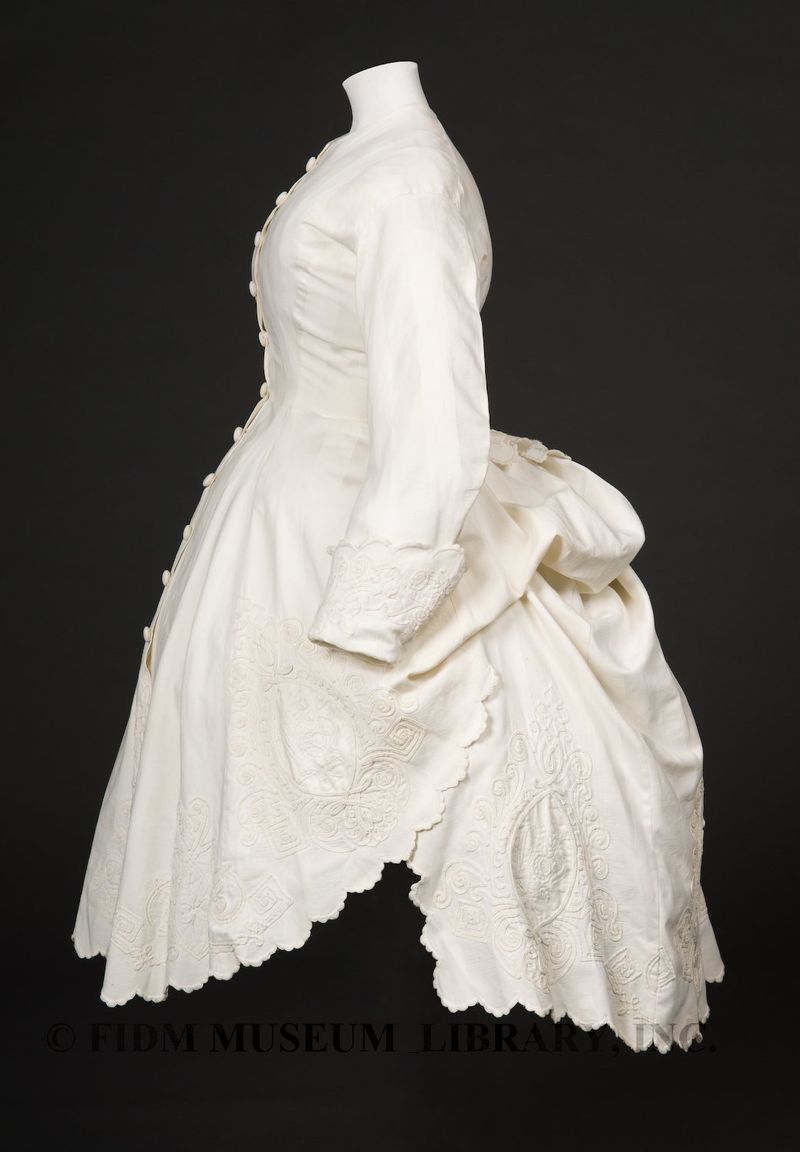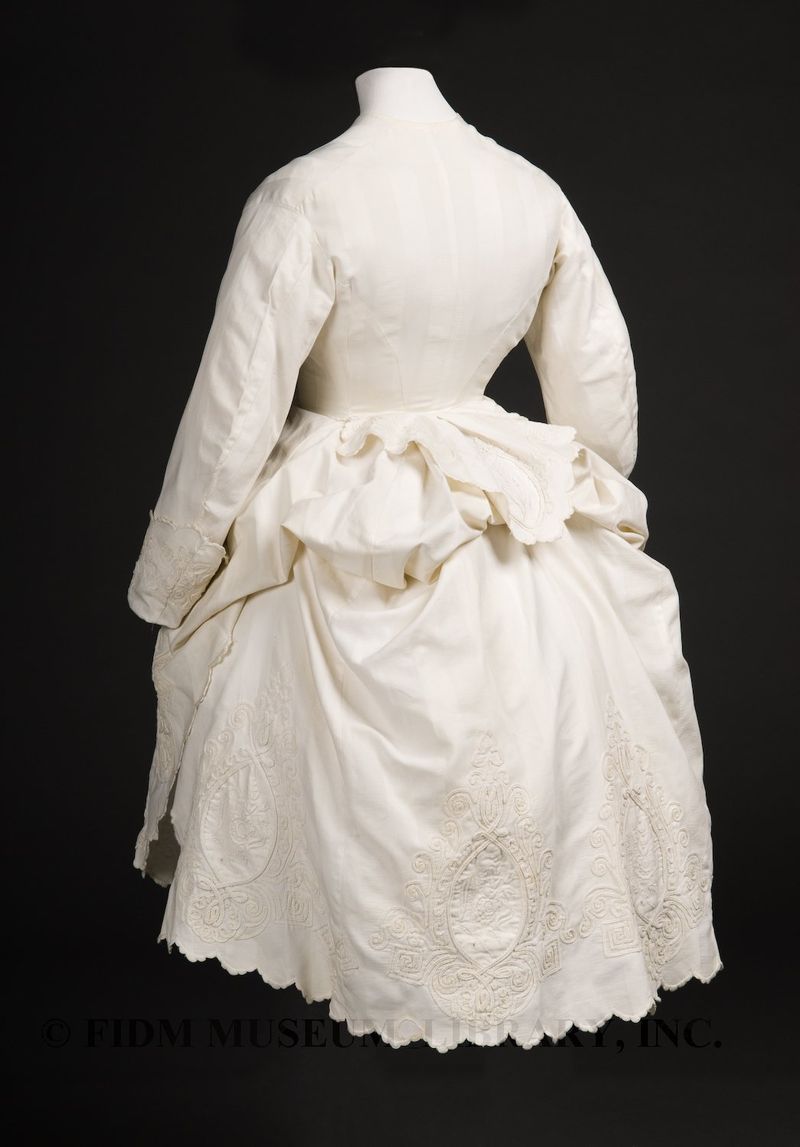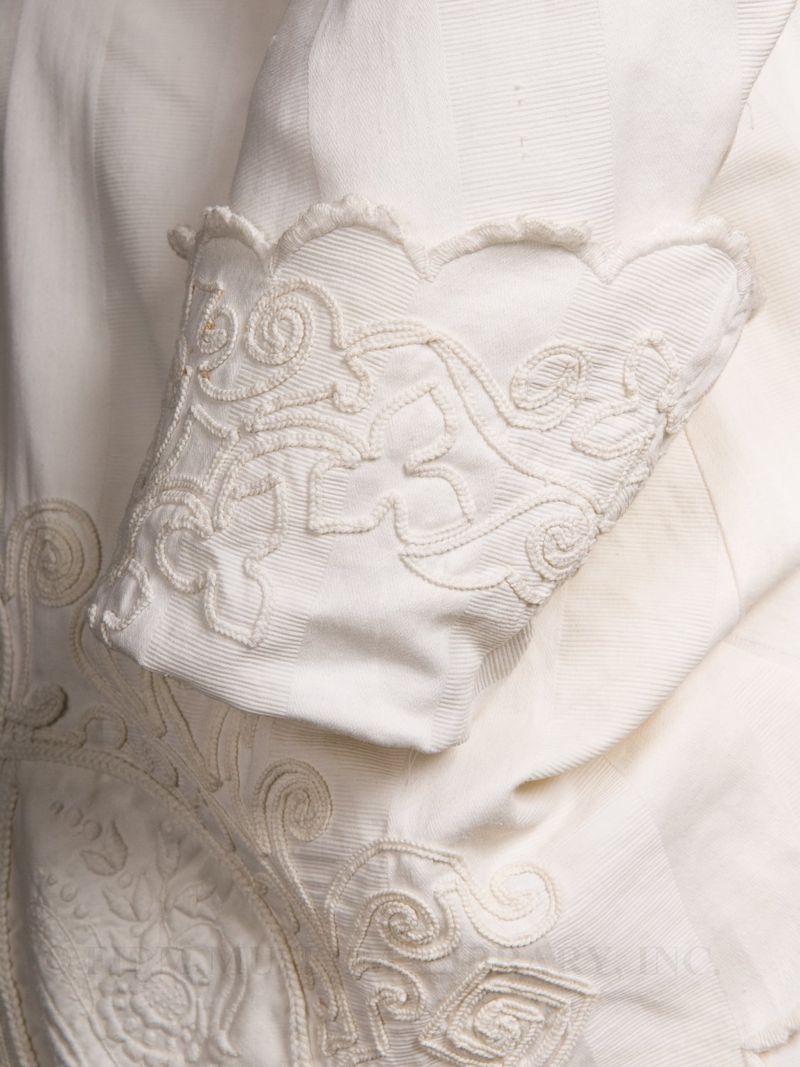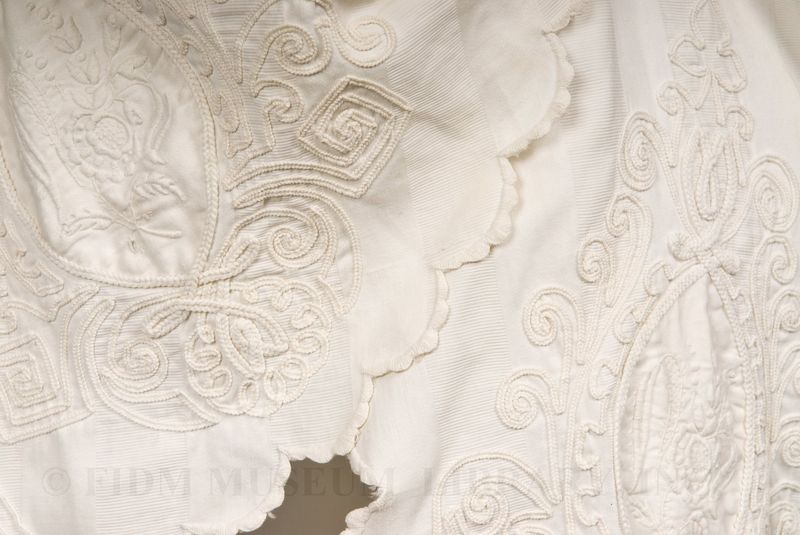Polonaise bodice
In 1872, fashion periodicals such as Godey's Lady's Book, Peterson's Magazine and Harper's Bazaar were filled with references to various styles of the polonaise dress. Whether a princess, vest, Russian or dolman polonaise, the common characteristic was a gathered and bunched puff of fabric at the back. Created through interior ties that pulled the fabric upwards, the polonaise was essentially a fitted overdress worn over a skirt of matching or contrasting fabric. In April of 1872, Harper's Bazaar suggested that a white polonaise was most useful, "as it may be worn effectively over black or colored silks as well as with the white skirt that complements it."

Polonaise bodice
c. 1869-1874
Gift of Anne Stampfer
94.661.2A-C
The height of style in 1872, the polonaise was actually a revival of a style that originated in the 1770s. Interest in historic dress was widespread in the 19th century, with styles from past eras influencing both everyday and fancy dress. The 19th century polonaise was sometimes called the "Pompadour Polonaise," in reference to the famous 18th century tastemaker, Madame de Pompadour. That Madame de Pompadour died in 1764, before the introduction of the polonaise, was of no apparent concern. Evoking her name was simply a way of elevating the polonaise to the most stylish of garments.
The turned back cuff exhibits another historic reference. Called a cavalier cuff, it references the deep cuffs seen in the 17th century. The image below also showcases the weave, alternating stripes of smooth satin weave and ribbed faille.
The whitework embroidery and soutache trim seen on the FIDM Museum polonaise are characteristic of early 1870s garments, which featured a generous amount of applied trim along with folded, draped or swagged fabric. In February of 1872, Godey's Lady's Book remarked that, "every kind of trimming is allowed just now by the whims of fashion." Applied soutache trim was a popular choice for all seasons: dark colored in the winter months and tan or white in the spring and summer. For the woman who wanted to sew her own polonaise, fashion periodicals featured numerous patterns and suggested that 6-9 yards of fabric would be sufficient.


